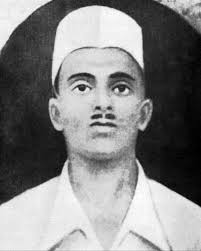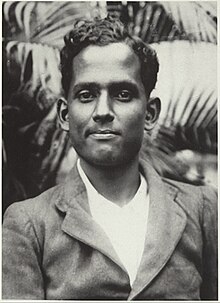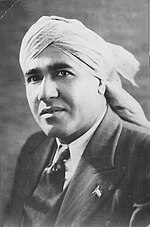Bhagat Singh had a close circle of revolutionary associates who played pivotal roles in his journey as a freedom fighter. Many of these individuals shared his dedication to the cause of Indian independence, and their collaboration in revolutionary activities helped shape the course of India’s struggle against British colonial rule. Here are some of his key close aids:

1. Rajguru (Shivaram Hari Rajguru)
Rajguru was one of Bhagat Singh’s most trusted companions and a fellow revolutionary in the Hindustan Socialist Republican Association (HSRA). Born in 1908 in Pune, Rajguru was known for his courage, discipline, and commitment to the cause of independence. He, along with Bhagat Singh and Sukhdev, was involved in the killing of J.P. Saunders, a British police officer, in retaliation for the death of Lala Lajpat Rai. Rajguru was arrested alongside Bhagat Singh and Sukhdev, and the three were eventually sentenced to death. Rajguru was executed on March 23, 1931, alongside Bhagat Singh and Sukhdev.

2. Sukhdev Thapar
Sukhdev Thapar, like Rajguru, was one of Bhagat Singh’s closest comrades. Born in 1907 in Punjab, Sukhdev was a passionate and committed revolutionary. He was actively involved in the activities of the HSRA and participated in various acts of defiance against the British government. Sukhdev’s role in the assassination of J.P. Saunders was critical, and he, along with Bhagat Singh and Rajguru, was arrested. Sukhdev was a key strategist in the movement and played a major role in organizing youth for the revolutionary cause. His execution on March 23, 1931, along with Bhagat Singh and Rajguru, became a symbol of sacrifice for India’s freedom.

3. Chandrashekhar Azad
Chandrashekhar Azad was one of the most influential and charismatic leaders of the Hindustan Socialist Republican Association (HSRA). While he was not directly involved in the bombing of the Legislative Assembly or the killing of Saunders, he was a key mentor and guide to Bhagat Singh and his associates. Azad, known for his audacious approach to fighting the British, was a key figure in shaping Bhagat Singh’s revolutionary ideology. He led several significant revolutionary activities and was instrumental in organizing the HSRA. Azad’s commitment to the cause of freedom was unshakable, and he was known for his famous last words: “I am Azad.” He died in 1931 in a gunfight with the British police.

4. Batukeshwar Dutt
Batukeshwar Dutt was a close associate of Bhagat Singh and was involved with him in the Central Legislative Assembly bombing on April 8, 1929. Dutt and Bhagat Singh threw bombs in the assembly as a protest against British rule. The intention behind the bombing was not to kill anyone but to create a loud political statement to attract attention to the independence movement. Dutt was arrested along with Bhagat Singh after the bombing, and he was sentenced to life in prison. He was later released from prison in 1938 but continued to be involved in the freedom struggle until his death in 1965.

5. Jatin Das
Jatin Das was a prominent revolutionary and a close associate of Bhagat Singh. Jatin Das was also a part of the Hindustan Socialist Republican Association and became known for his involvement in revolutionary activities. He was arrested and sent to jail after being involved in the protests against British rule. While in prison, Jatin Das went on a hunger strike demanding better conditions for Indian prisoners, similar to Bhagat Singh’s own hunger strike. Unfortunately, Jatin Das died in prison in 1929 after a prolonged hunger strike, but his martyrdom further fueled the revolutionary movement. Bhagat Singh was deeply affected by his death and considered him a close friend and fellow fighter for the cause.

6. Shahid Udham Singh (Though not directly part of the HSRA, he was influenced by Bhagat Singh)
Udham Singh was another revolutionary who was inspired by Bhagat Singh’s courage and sacrifice. Although Udham Singh did not work closely with Bhagat Singh during the latter’s life, Singh later avenged the Jallianwala Bagh massacre by assassinating Michael O’Dwyer, the former Lieutenant Governor of Punjab, in 1940. Bhagat Singh’s ideals of fighting British tyranny were a significant influence on Udham Singh’s actions, and he is remembered as a martyr in his own right.
Reference links - Bhagat Singh – Wikipedia
https://en.wikipedia.org/wiki/Bhagat_Singh - Bhagat Singh’s Associates Who Faded into Oblivion – The Tribune
https://www.tribuneindia.com/news/archive/punjab/bhagat-singh-s-associates-who-faded-into-oblivion-563709 - Bhagat Singh Biography – Britannica
https://www.britannica.com/biography/Bhagat-Singh - Kishori Lal – Amrit Mahotsav (Govt. of India site)
https://amritmahotsav.nic.in/unsung-heroes-detail.htm?3508 - Bhagat Singh as I Knew Him – Ajoy Ghosh | Sankalp India Foundation
https://www.sankalpindia.net/bhagat-singh-i-knew-him-ajoy-ghosh - Hans Raj Vohra – Wikipedia
https://en.wikipedia.org/wiki/Hans_Raj_Vohra - Bhagat Singh, Rajguru, and Sukhdev’s Execution – BYJU’S
https://byjus.com/free-ias-prep/this-day-in-history-mar23 - Gaya Prasad Katiyar – Wikipedia
https://en.wikipedia.org/wiki/Gaya_Prasad_Katiyar